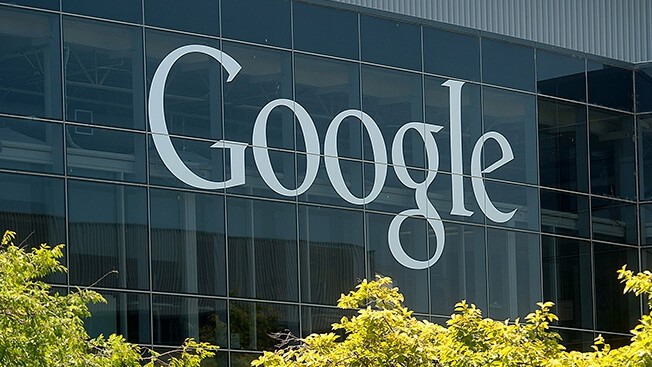Alphabet Inc ’s Google Translate tool has announced it added 13 new languages. With its tenth birthday right around the corner, the new additions mean that the tool now covers an impressive 99 percent of the online population.
The 13 new languages include Hawaiian, Kurdish, Amharic (Ethiopia), Frisian (Netherlands and Germany), Luxembourgish, Corsican, Shona (Zimbabwe), Xhosa (South Africa), Pashto (Pakistan and Afghanistan), Scots Gaelic, Samoan, Kyrgyz, and Sindhi (India and Pakistan).
Sindhi and Pashto alone have 110m speakers combined, while Amharic is the top Semitic language after Arabic and has 22m speakers.
These new languages will only be available for translation via typing at first, but they could eventually be added to Translate’s other categories, such as Talk, See, Write, and Snap.
New languages will affect more than just users who speak them
Even if you’ve never had the burning desire to read a page that is only available in Frisian, the move can still have a great impact on your life. The 13 new languages combined have 120m speakers, and now these people will be able to interact with the rest of the world much easier than before. Translate goes both ways, which means these people will be potential readers of websites and customers of businesses that operate in other languages.
It might feel like English is everywhere these days, but the truth is that only half of all websites on the internet are in English, Gizmodo reports. That means that even those of us who are lucky enough to speak this language are still missing out on half of all the knowledge on the internet. This move just brings even more info to our fingertips.
Alphabet Inc’s Google Translate gets better with time
Google co-founder Sergey Brin started Google Translate after he became frustrated with the nonsensical results given by a translation service the company was using. When he ran an email from a South Korean fan that said Google was his favorite search engine through that tool, the result read: “The sliced raw fish shoes it wishes. Google green onion thing!” Brin knew that Google could do better and launched Translate in 2006.
In its early days, Google Translate was widely shunned for its poor, unnatural sounding translations, but the tool has made great strides and now delivers nearly flawless results for some languages. That’s because it uses a mix of machine learning and human volunteers to ensure its output makes sense. A network of 3m volunteers correct the tool’s translations and provide new words and phrases.
Even though 99 percent of internet users are now covered by Translate, their work is not done. There are still a few major languages that have yet to be added, such as Oida (India), Cantonese (Hong Kong), and Tigrinya (Ethiopia). Their inclusion depends on how fast physical sources can be digitized and the number of volunteers who sign up to help add them.
In their official statement, the firm said: “As already existing documents can’t cover the breadth of a language, we also rely on people like you in Translate Community to help improve current Google Translate languages and add new ones.”
Trusted & Regulated Stock & CFD Brokers
What we like
- 0% Fees on Stocks
- 5000+ Stocks, ETFs and other Markets
- Accepts Paypal Deposits
Min Deposit
$200
Charge per Trade
Zero Commission on real stocks
64 traders signed up today
Visit Now67% of retail investor accounts lose money when trading CFDs with this provider. You should consider whether you can afford to take the high risk of losing your money.
Available Assets
- Total Number of Stocks & Shares5000+
- US Stocks
- German Stocks
- UK Stocks
- European
- ETF Stocks
- IPO
- Funds
- Bonds
- Options
- Futures
- CFDs
- Crypto
Charge per Trade
- FTSE 100 Zero Commission
- NASDAQ Zero Commission
- DAX Zero Commission
- Facebook Zero Commission
- Alphabet Zero Commission
- Tesla Zero Commission
- Apple Zero Commission
- Microsoft Zero Commission
Deposit Method
- Wire Transfer
- Credit Cards
- Bank Account
- Paypall
- Skrill
- Neteller
What we like
- Sign up today and get $5 free
- Fractals Available
- Paypal Available
Min Deposit
$0
Charge per Trade
$1 to $9 PCM
Visit Now
Investing in financial markets carries risk, you have the potential to lose your total investment.
Available Assets
- Total Number of Shares999
- US Stocks
- German Stocks
- UK Stocks
- European Stocks
- EFTs
- IPOs
- Funds
- Bonds
- Options
- Futures
- CFDs
- Crypto
Charge per Trade
- FTSE 100 $1 - $9 per month
- NASDAQ $1 - $9 per month
- DAX $1 - $9 per month
- Facebook $1 - $9 per month
- Alphabet $1 - $9 per month
- Telsa $1 - $9 per month
- Apple $1 - $9 per month
- Microsoft $1 - $9 per month
Deposit Method
- Wire Transfer
- Credit Cards
- Bank Account



